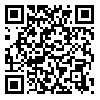1. Paul B, Roy S, Chattopadhyay D, Bisoi S, Misra R, Bhattacharya N, et al. A Study on Safe Injection Practices of Nursing Personnel in a Tertiary Care Hospital of Kolkata, West Bengal, India. TAF Preventive Medicine Bulletin. 2011;10(6):681-6. [
DOI:10.5455/pmb.20110523051229]
2. Palese A, Sartor A, Costaperaria G, Bresadola V. Interruptions during nurses' drug rounds in surgical wards: observational study. J Nurs Manag. 2009;17(2):185-92. [
DOI:10.1111/j.1365-2934.2007.00835.x] [
PMID]
3. Adejumo PO, Dada F. A comparative study on knowledge, attitude, and practice of injection safety among nurses in two hospitals in Ibadan, Nigeria. International Journal of Infection Control. 2013;9(1): 1-6. [
DOI:10.3396/ijic.v9i1.004.13]
4. Pinar RG. Improving Perinatal Patient Safety among Turkish Nursing Students Using Simulation Training. Procedia Soc Behav Sci. 2013;83:88-93. [
DOI:10.1016/j.sbspro.2013.06.017]
5. Bolarinwa OA, Salaudeen AG, Aderibigbe SA, Musa OI, Akande TM, Bamidele JO. Injection safety practices among primary health care workers in Ilorin, kwara state of Nigeria. Health science journal. 2012; 6(3): 496-508.
6. Perz JF, Thompson ND, Schaefer MK, Patel PR. US outbreak investigations highlight the need for safe injection practices and basic infection control. Clin Liver Dis. 2010;14(1):137-51. [
DOI:10.1016/j.cld.2009.11.004] [
PMID]
7. Omorogbe VE, Omuemu VO, Isara AR. Injection safety practices among nursing staff of mission hospitals in Benin City, Nigeria. Ann Afr Med. 2012;11(1): 36-41. [
DOI:10.4103/1596-3519.91020] [
PMID]
8. Rehan H, Chopra D, Sah RK, Chawla T, Agarwal A, Sharma G. Injection practices of healthcare professionals in a Tertiary Care Hospital. J Infect Public Health. 2012;5(2):177-81. [
DOI:10.1016/j.jiph.2012.01.001] [
PMID]
9. Abkar MAA, Wahdan IMH, Sherif AAR, Raja'a YA. Unsafe injection practices in Hodeidah governorate, Yemen. J Infect Public Health. 2013;6(4):252-60. [
DOI:10.1016/j.jiph.2013.01.003] [
PMID]
10. Chowdhury AA, Roy T, Faroque A, Bachar SC, Asaduzzaman M, Nasrin N, et al. A comprehensive situation assessment of injection practices in primary health care hospitals in Bangladesh. BMC Public Health. 2011;11(1):779-91. [
DOI:10.1186/1471-2458-11-779] [
PMID] [
PMCID]
11. Shill MC, Fahad M, Sarker S, Dev S. Injection practices at primary healthcare units in bangladesh: experience at six upazilla health complexes. Australas Med J. 2011;4(1):26. [
DOI:10.4066/AMJ.2011.471] [
PMID] [
PMCID]
12. Cheung K, Ho SC, Ching SSY, Chang KKP. Analysis of needlestick injuries among nursing students in Hong Kong. Accid Anal Prev. 2010;42(6):1744-50. [
DOI:10.1016/j.aap.2010.04.015] [
PMID]
13. Ozer ZC, Bektas HA. Needlestick injuries during education period in nursing students in Turkey. Procedia Soc Behav Sci. 2012;46:3798-801. [
DOI:10.1016/j.sbspro.2012.06.149]
14. Simon LP. Prevention and management of needlestick injury in Delhi. Br J Nurs. 2009;18(4):252-6. [
DOI:10.12968/bjon.2009.18.4.39626] [
PMID]
15. Rakhshani F, Heidari M, Barati S. [Prevalence of needlestick injuries among the healthcare professionals in Zahedan medical Sciences university]. Iranian Journal of Epidemiology. 2009;4(3):87-91.
16. Nejadghaderi M, Safizadeh H, Khanjani N. [The knowledge and practice of medical staff about needle injuries in Rafsanjan's Ali-ebne-Abitaleb hospital, Iran]. Journal of Health and Development. 2012;1(1):1-10.
17. Saoji A, Kantibhushan C, Aniruddha D, Mudey A. Injection Safety Awareness and Knowledge in a Rural Population. Global J Health Sci. 2011;3(1):189-92. [
DOI:10.5539/gjhs.v3n1p189]
18. Naik A, Gharat V, Bansal R. An Assessment of Injection Practices in Urban Health Centres of Surat City: Are The Health Care Workers Safe? National Journal of Community Medicine. 2012;3(1):125-8.
19. Gyawali S, Rathore DS, Bhuvan K, Shankar PR. Study of status of safe injection practice and knowledge regarding injection safety among primary health care workers in Baglung district, western Nepal. BMC Int Health Hum Rights. 2013;13(1):3-9. [
DOI:10.1186/1472-698X-13-3] [
PMID] [
PMCID]
20. Dolan SA, Felizardo G, Barnes S, Cox TR, Patrick M, Ward KS, et al. APIC position paper: safe injection, infusion, and medication vial practices in health care. Am J Infect Control. 2010;38(3):167-72. [
DOI:10.1016/j.ajic.2010.01.001] [
PMID]
21. Tajari T, Tajari F. [Comparison of Effectiveness of Synectics Teaching Methods with Lecture about Educational Progress and Creativity in Social Studies Lesson in Iran at 2010]. Procedia-Social and Behavioral Sciences. 2011;28:451-4. [
DOI:10.1016/j.sbspro.2011.11.087]
22. Jarvis P. Lifelong education and its relevance to nursing. Nurse Educ Today. 2005;25(8):655-60. [
DOI:10.1016/j.nedt.2005.09.005] [
PMID]
23. Okwen MP, Ngem BY, Alomba FA, Capo MV, Reid SR, Ewang EC. Uncovering high rates of unsafe injection equipment reuse in rural Cameroon: validation of a survey instrument that probes for specific misconceptions. Harm Reduct J. 2011;8(1):1-9. [
DOI:10.1186/1477-7517-8-4] [
PMID] [
PMCID]
24. Chen S, Xia Y. Research on application of multimedia technology in college physical education. Procedia Engineering. 2012;29:4213-7. [
DOI:10.1016/j.proeng.2012.01.645]
25. Jalalinia S, Zakeri Moghadam M, Kazemnejad A. [Investigation the performance of the safe injection methods by nurses in emergency wards]. Journal of hayat. 2006;12(1):35-45.
26. Musa O, Parakoyi D, Akanbi A. Evaluation of health education intervention on safe immunization injection among health workers in Ilorin, Nigeria. Ann Afr Med. 2006;5(3):122-8.
27. Dadgari A, Kasaeian A, Dadvar L, Kalatejari M, Rezaee M, Mirzaee M. [Effects of education on nurses' knowledge and skill in drug dosage calculation]. Journal of Knowledge & Health. 2012;7(1):20-6.
28. 28 Ban KO. The effectiveness of an evidence-based nursing care program to reduce ventilator-associated pneumonia in a Korean ICU. Intensive Crit Care Nurs. 2011;27(4):226-32. [
DOI:10.1016/j.iccn.2011.04.001] [
PMID]
29. Siavash Vahabi Y, Tadrisi SD, Ghayyem S, Ebadi A, Daneshmandi M, Saghafi Nia M. [Comparing the effect of triage education in lecture and multimedia software on nurses learning]. Journal of Critical Care Nursing. 2011;4(1):7-12.
30. Bahreini M, Bijani M, Rahmati H, Shahamat S. [The effectiveness of a multimedia training program on incidence of occupational exposure to contaminated sharp tools among nurses]. Iran Journal of Nursing. 2011;24(69):69-77.
31. Walters M, Furyk J. Nurse education in a resource limited environment: An evaluation of an educational teaching package on intramuscular injections, in Blantyre, Malawi. Nurse Educ Pract. 2010;10(5):256-61. [
DOI:10.1016/j.nepr.2009.11.015] [
PMID]






